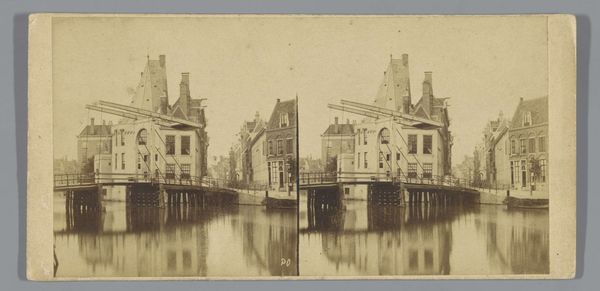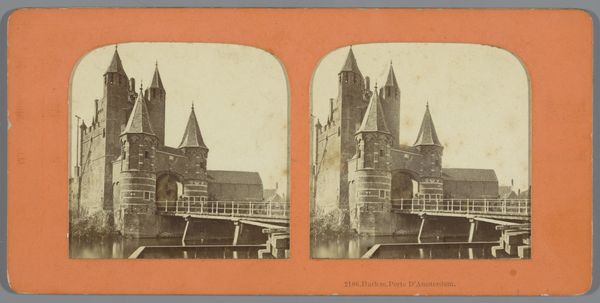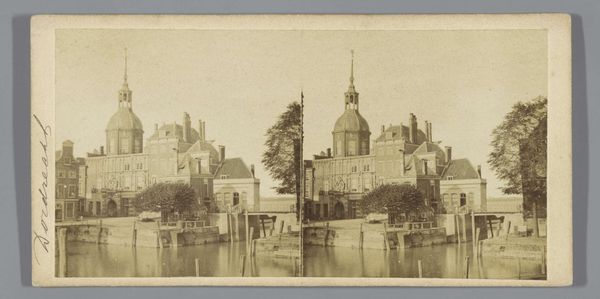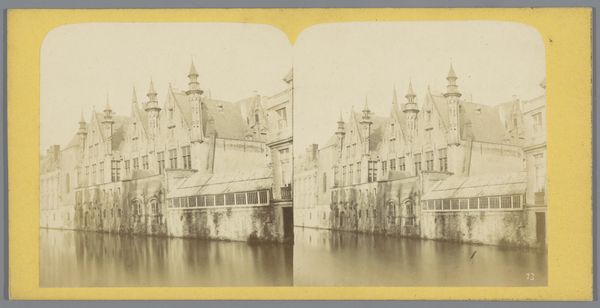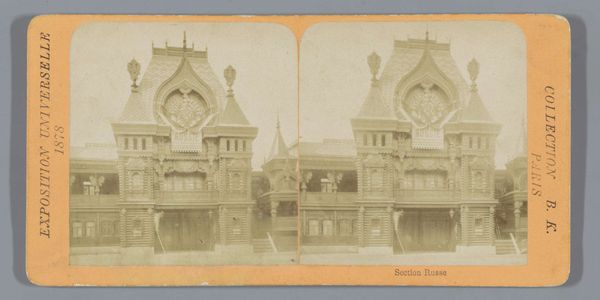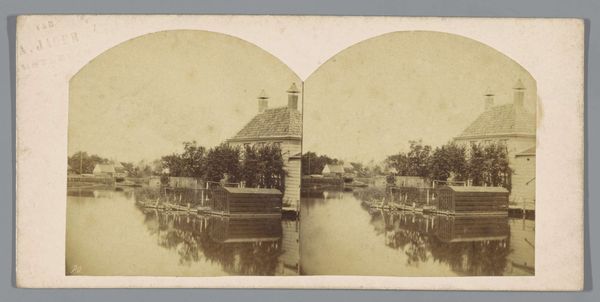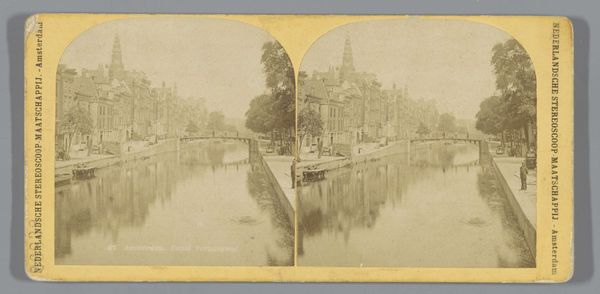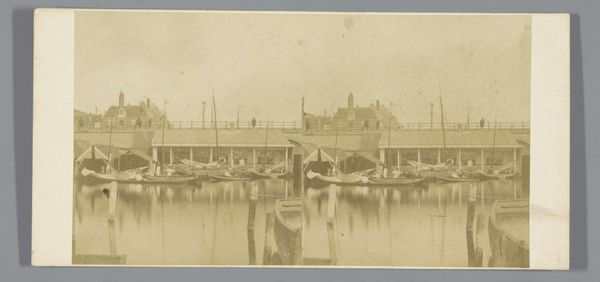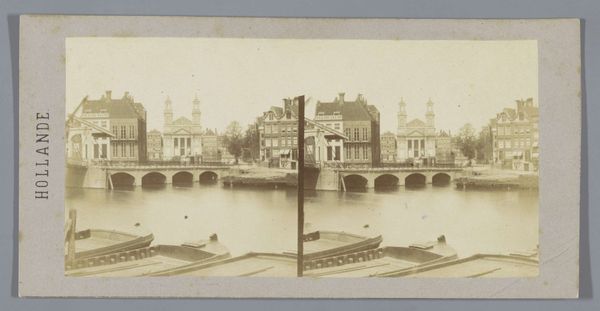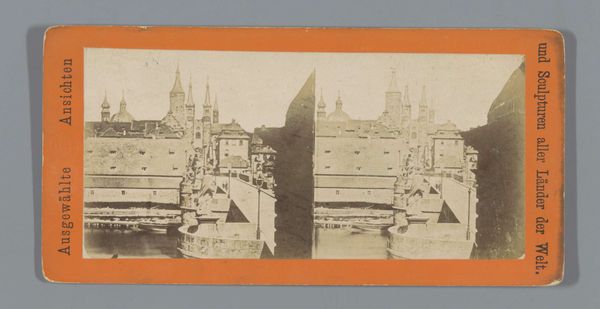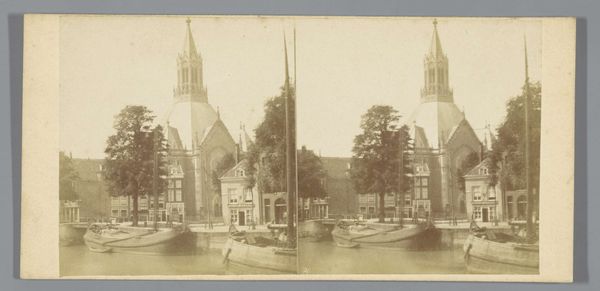
print, photography
# print
#
landscape
#
photography
#
cityscape
Dimensions: height 87 mm, width 173 mm
Copyright: Rijks Museum: Open Domain
Curator: Welcome. Today, we're looking at a photograph titled "Amsterdamse Poort in Haarlem," captured between 1859 and 1865 by Pieter Oosterhuis. It is a cityscape presented in a print format. Editor: My first impression is that it’s incredibly still and stoic. The sepia tone lends a sense of faded glory to the formidable gate. Curator: Indeed. What’s fascinating is that this photographic print is not just an artistic endeavor, but also a historical record. The Amsterdamse Poort, the subject here, speaks to a period of intense urban and infrastructural development, reflecting advancements in construction and material use during the mid-19th century. It underscores photography's crucial role in documenting evolving urban landscapes. Editor: And the gate itself, with its pointed turrets and imposing presence, certainly carries the weight of history. It acts as a visual emblem of Haarlem's strength and independence. Gates, like this, were always potent symbols, not just controlling access, but also signifying power and protection. The way it's reflected in the water doubles its symbolic impact. Curator: Absolutely. It's crucial to recognize that while Oosterhuis' work presents as art, it also served the growing field of documentation and architectural study. The reproducible nature of the print allowed for wider distribution and engagement with Haarlem’s identity as conveyed by such constructions, influencing perceptions of the city's power and prosperity. Editor: You know, those reflections in the water almost give the gate a ghostly twin, reminding us that even solid structures and cities are always in flux, changing and vulnerable. The light and shadow play so delicately it reveals, perhaps unintentionally, the temporary nature of even the grandest achievements. Curator: I would also argue that through photography's detailed reproduction, one starts to consider how each brick and rivet plays a part in this structure. How does the availability of iron affect architectural forms? This bridge reflects trade networks as much as aesthetic preferences. Editor: Well, thinking about this symbolic reflection and how this photography preserved and reproduced that symbol...it emphasizes both Haarlem's identity at that moment and its imagined history. The architecture embodies a powerful narrative that remains visible and reinterpreted through these prints. Curator: Yes, and by focusing on the materials and construction techniques, we move beyond just aesthetic appreciation to consider how the city, and its iconic gateways, were literally built, and what those choices reveal about its values and available resources. Editor: I came to appreciate how a photograph could make visible not just a place, but a kind of enduring statement about power. Curator: And seeing that statement mass-produced reminds us of its context beyond artistic ambition. Thank you for those interesting iconographic insights.
Comments
No comments
Be the first to comment and join the conversation on the ultimate creative platform.
